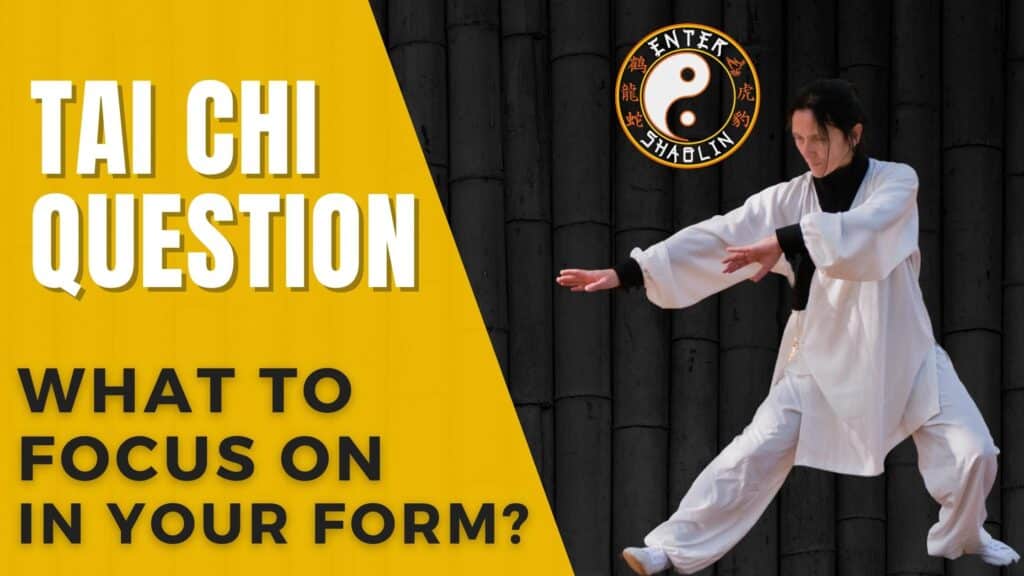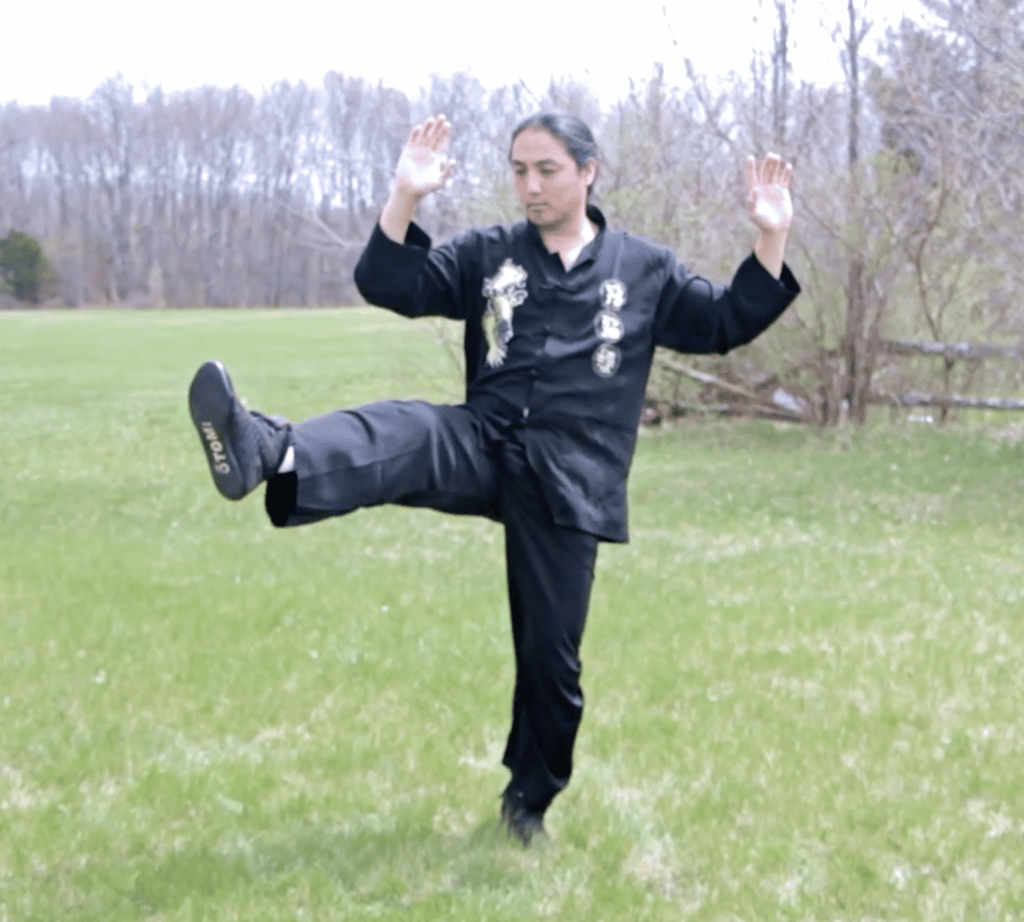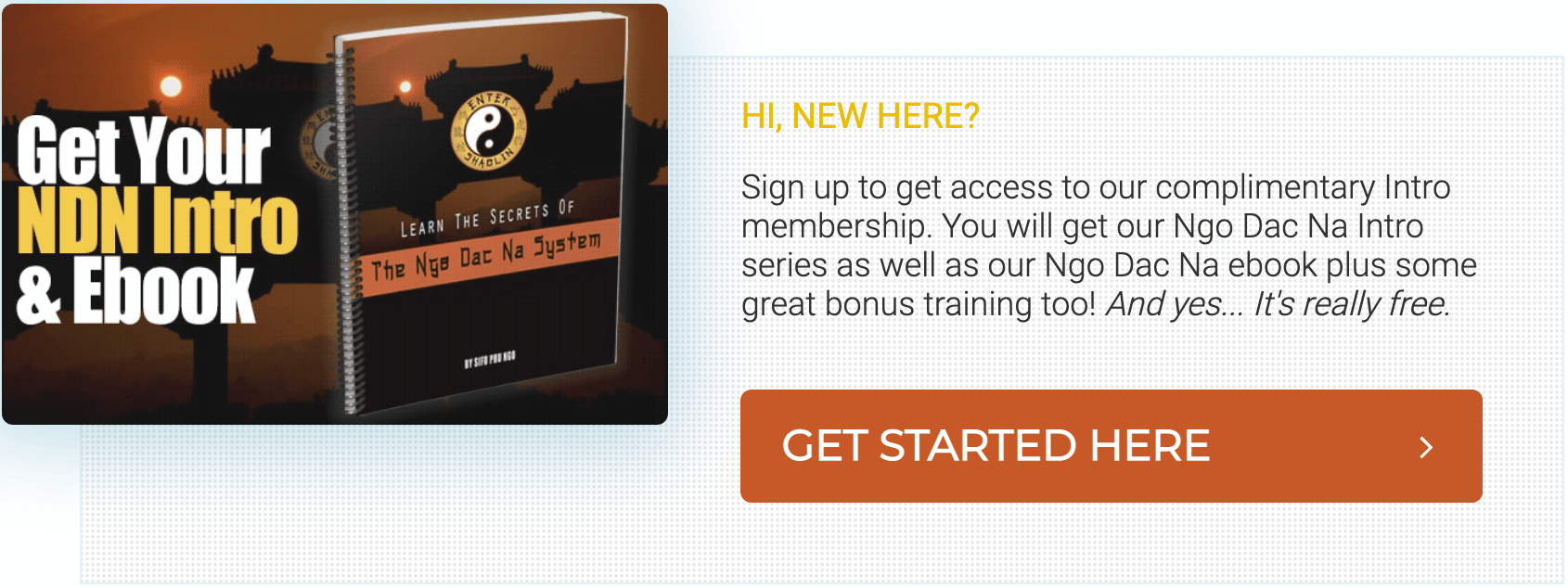
It’s important to have the right Tai Chi focus in your taiji training. I remember hearing a story about 2 people walking side by side. Because there was a slight difference in the way they do people were walking after walking 100 miles the 2 people didn’t see each other anymore.
This is true for Tai Chi. If your focus is not correct you will find yourself in the wrong place so to speak.
What to Focus on in Tai Chi
There are many different aspects to learning Tai Chi. These include breathing techniques, relaxation, and shifting your weight. In addition to learning the basic moves, Tai Chi also improves your cognitive abilities. It is a very accessible form of exercise that anyone can learn. In order to get the most out of this form, you must learn to link your breath with your movements.
Relaxation
Tai Chi exercises are known to improve the level of relaxation in a person. These exercises involve awareness of the tensions in the body and the gradual release of these tensions while moving slowly and stationary. Although true relaxation is an elusive state for many people, it is achievable with proper practice and discipline. Tai Chi is also known for its benefits, such as reducing stress and anxiety.
Tai Chi is a form of exercise that requires complete relaxation of all parts of the body, including the internal parts. The classic Tai Chi Chuan manual states that relaxation is necessary for the chi to circulate throughout the body. According to Yang Cheng Fu, the body has water pipes and meridian channels that allow chi to travel and move throughout it.
Many Tai Chi practitioners confuse relaxation with collapse. However, Tai Chi relaxation involves a different sense of “song” than other forms of relaxation. Tai Chi relaxation allows a person to be relaxed but alert and energized. This allows the mind to rest and restore. This is the true essence of relaxation.
Tai chi practitioners begin by separating energy in their upper and lower bodies. Then they adjust their posture so that their body weight is placed in their legs. At the same time, they imagine the weight of their upper body to be lighter than their legs.
Breathing techniques

In Tai Chi, breathing techniques are a vital part of the exercise. During a form, practitioners store energy in their hands as they breathe in through the nose and exhale it when their hands come down. The technique is simple and requires no special equipment. You can practice breathing exercises anywhere and anytime, no matter where you are or what you are doing.
Tai Chi breathing techniques should be done as the first step in a Tai Chi exercise. It’s best to start with awareness and breathe deeply. Try not to change your posture too much, as it may cause you to change your breathing pattern. You should also learn to feel your body’s weight distribution when you are practicing Tai Chi.
Breathing in Tai Chi helps calm the body and put you into the flow. To start, visualize your lower energy center, which is located just below your belly button. Your body will be calm and relaxed when you focus on this center. Performing this breathing technique will strengthen the muscles in the abdominal area and relax the internal organs.
Breathing exercises are great for people with a range of health conditions. They can help reduce anxiety and panic attacks. Practice breathing through your nose and down to the abdomen, while counting while you breathe. Some breathing exercises may not be suitable for people with a chronic lung condition, so check with your doctor before attempting them.
Shifting your weight
Shifting your weight in Tai Chi can result in imbalance, muscle strain, and less than optimal alignment. This is because weight shifting involves spreading the weight of your upper body across both legs and the foot that is supporting the other leg. In Tai Chi, you should always maintain a relaxed body state and maintain your vertical alignment.
The initial standing position is very important when learning Tai Chi. To avoid imbalance, try to keep your weight evenly distributed in both legs. In addition, keep your center of gravity leveled by ensuring your thighs and hip joint are stable. This will help you avoid swaying forward and downward.
Observing a class
If you’re new to Tai Chi, it can be useful to watch a class. It can help you understand how the movements are done and how to maintain correct body posture. Tai Chi is a martial art that focuses on gentle movements and relaxing the body. While it may seem intimidating at first, observing a class can give you the basics.
While you are watching a class, you can also notice how different students learn. Some students are visual and auditory, while others are kinesthetic and prefer to learn by doing. You may notice that some students start moving immediately after discussing form. Others may become bored if the teacher spends too much time talking about the forms.
When observing a Tai Chi class, make sure to ask questions. If you’re interested in learning the art, you can ask the instructor about specific details that you may find confusing. Ask questions about the techniques and find out if they’re accessible to you. Once you have your questions answered, you can sign up for a Tai Chi class.
If you’re new to Tai Chi, observe a class at a local community center. Many senior centers and YMCAs offer classes. In addition, the Osher Center for Integrative Health offers a variety of classes. There are classes for beginners and more experienced students. Private lessons are also available.
Taking a class
If you are new to Tai Chi, there are several things that you should know before taking a class. First of all, you should wear comfortable clothing. Ideally, you should avoid baggy clothing, which will make it difficult to bend and move. You should also bring a sweatshirt or a sweater to stay cool during the class.
Tai Chi is a full-body exercise that works both your muscles and your mind. It can reduce stress and anxiety while improving your balance and your overall health. It has even been shown to reduce the risk of falls by as much as 50%! Tai Chi also increases your proprioception, which helps you to keep your balance. This can help you avoid falling, which can lead to a number of other health issues.
A Tai Chi teacher will teach you the proper posture, which will help you improve coordination and poise. They will also teach you how to align your movements with your natural rhythms. Whether you choose a private or group class, you should know that classes vary in length and style. Your teacher will also have their own preferences.
It’s important to remember that a Tai Chi teacher’s style may vary from yours. If you have a specific style in mind, try attending a few classes before making a decision. Often, you’ll be able to attend a class without paying, so you can get a feel for the style and the pace.
Practicing at home
Practicing Tai Chi at home is an excellent way to stay in shape while maintaining your flexibility and strength. It is a gentle form of exercise that is beneficial for all ages, including the elderly. Its gentle movements can also reduce pain and increase mobility. It may also help people with joint or back problems to avoid falling. If you want to practice Tai Chi at home, it’s important to make sure you have a suitable space, comfortable clothing, and shoes.
While Tai Chi is easy to learn, you should have a qualified instructor guiding you through your sessions. This way, you’ll get an overview of the fundamentals in a short period of time. However, you should not expect to fully learn Tai Chi if you’re practicing by yourself, as it will take longer to master the movements.
The best way to learn Tai Chi at home is through video lessons or online classes. These can be particularly helpful for beginners who may not be able to attend regular classes. You can also practice tai chi from home with a fan to keep yourself cool during your sessions. It’s best to start with the Yang Style form. You can even watch a YouTube video that demonstrates this form in action to get an idea of how it’s done.
There’s no need to buy expensive equipment to learn Tai Chi at home. A Tai Chi trainer app will teach you how to learn the basics at home. The app includes videos, lesson guides, and demonstrations so you can see how the movements look from every angle. It’s important to practice the movements correctly in order to make them as efficient as possible.
What Does Tai Chi Do For Your Brain?
Tai Chi was first used as a martial art hundreds of years ago, and is now one of the most popular forms of exercise. Its slow and flowing movements are easy on the joints and can have numerous benefits for the body and brain. It can reduce stress and help you sleep better.
Tai Chi also helps the brain become more efficient, allowing it to perform tasks more quickly and with greater focus. It has been shown to improve memory retention, enhance focus, and speed up decision-making. Recent research indicates that Tai Chi can improve cognitive function and increase cognitive performance in older adults.
In addition to helping people relieve stress, Tai Chi has been proven to improve mood and reduce anxiety. This may be due to the calming effects it has on the nervous system and the hormones that regulate mood. However, more studies are needed to establish a definitive link between tai chi and improved mood.
The practice of tai chi has also been shown to help older adults maintain their functional ability and live independently. The meditative aspect of tai chi helps improve memory and focus, reducing the risk of falling. In addition to its cognitive benefits, tai chi is a refreshing form of exercise for people of any age.


Leave a Reply